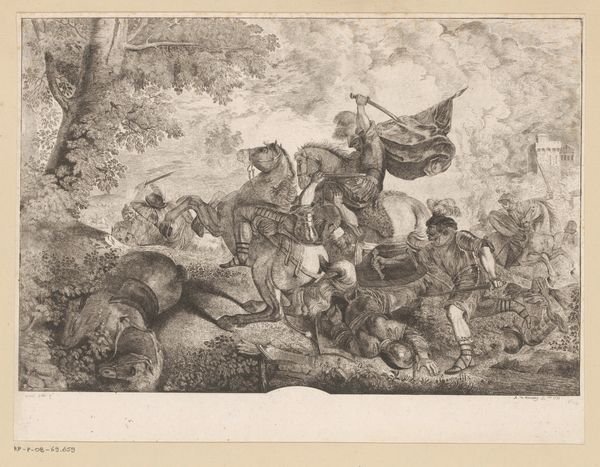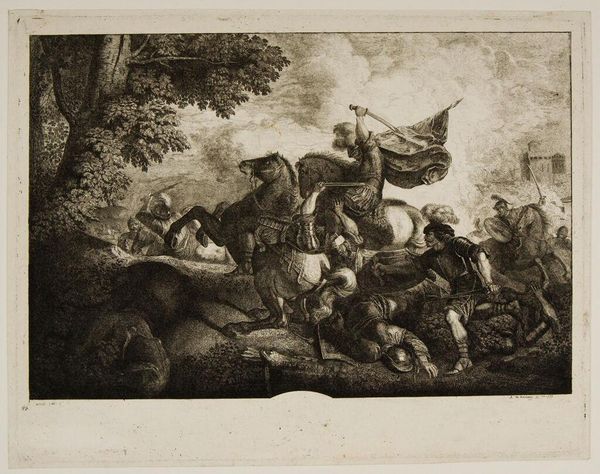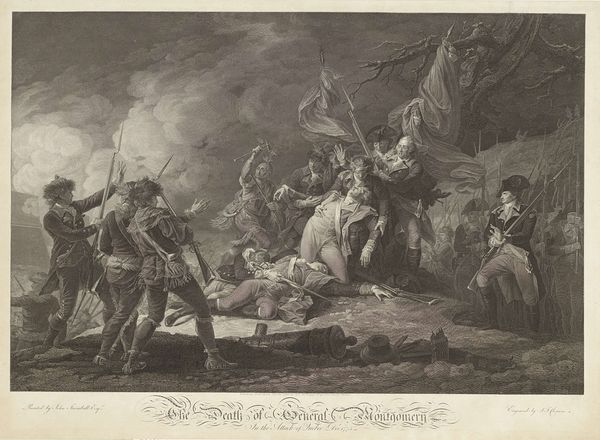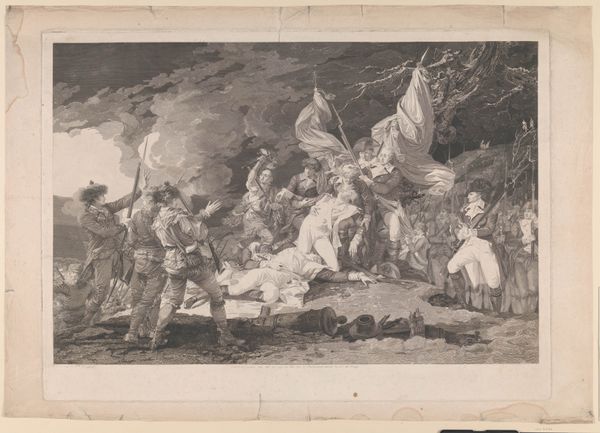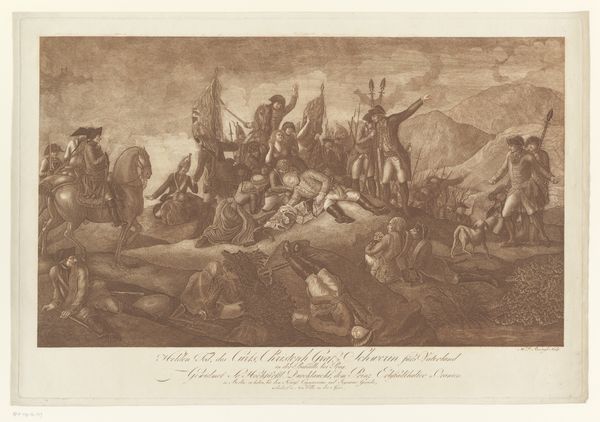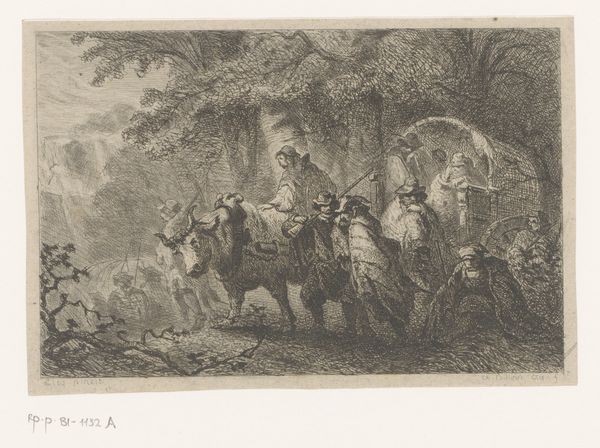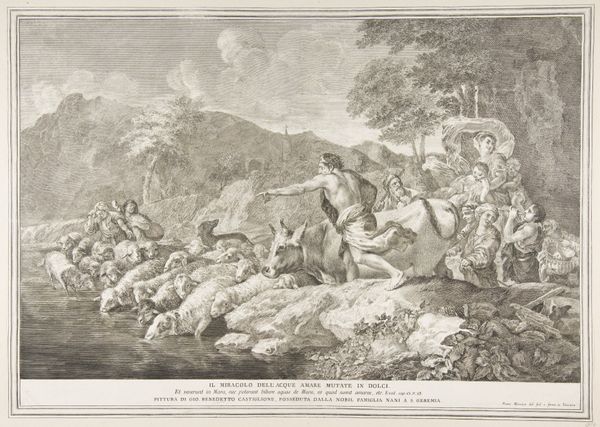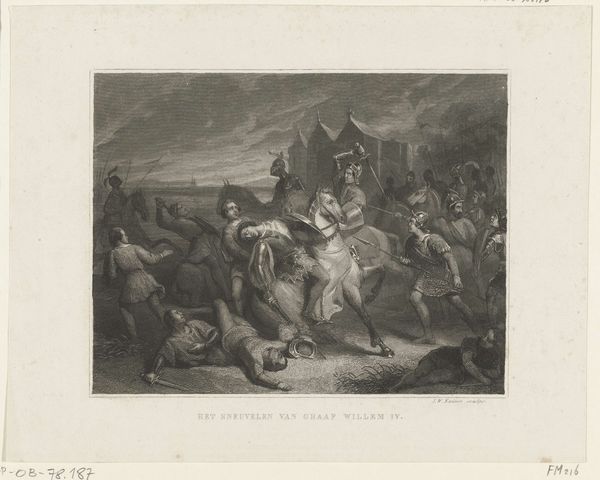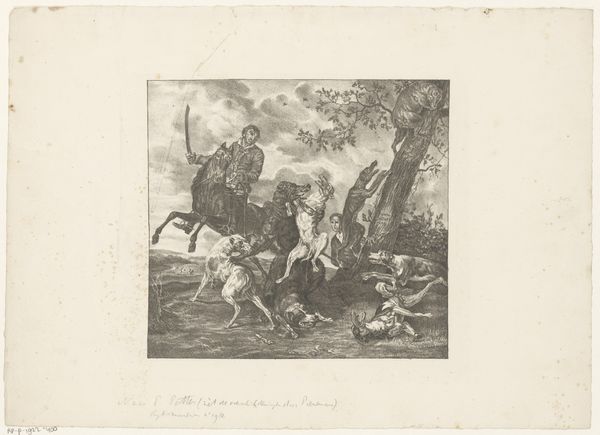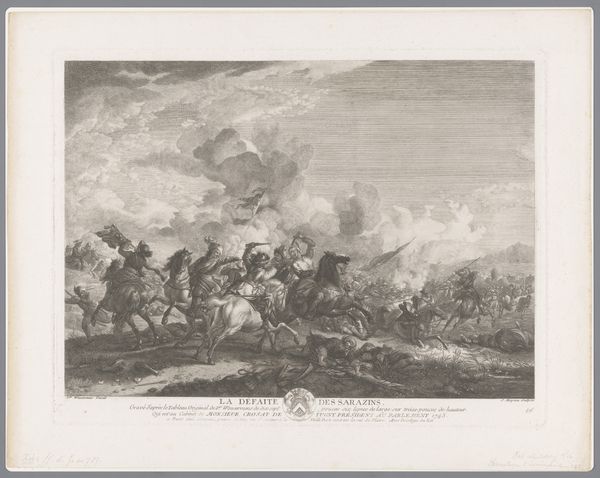
print, engraving
#
narrative-art
#
baroque
# print
#
old engraving style
#
figuration
#
history-painting
#
engraving
Dimensions: height 254 mm, width 330 mm
Copyright: Rijks Museum: Open Domain
Curator: This intense scene is "Strijdgewoel," an engraving by Antoine de Marcenay de Ghuy, dating back to 1755. Editor: My initial impression is chaos! A swirling mass of figures, all caught in this dramatic struggle depicted using a stark black-and-white palette. Curator: Indeed. It's a powerful visual narrative. De Ghuy, in creating this print, situated it within the established tradition of history painting, a genre meant to communicate not only past events, but also to influence present understandings of power and morality. It is an attempt to situate viewers in thinking about social identity through conflict and violence. Editor: You know, when I look at this, I see the incredible technical skill in the engraving process. The artist must have carefully modulated the pressure on the burin to achieve such fine details and create the range of values that define the form. You can almost feel the weight of their decisions at each mark, revealing both mastery and the labor behind this art. The production value really adds an intriguing social dimension when considering it beyond aesthetics. Curator: Absolutely, that labor is vital! Understanding how it was created enables one to further situate the narrative: what does the piece convey, considering the labour required? Is it trying to idealize power or expose how precarious that sort of authority could be during conflicts? Notice the central figure on horseback; his stance and waving flag imply triumph, but the cost of battle, the materials and the people involved in that victory...they're rendered equally visible. Editor: It seems he emphasizes on showing the consequence, it highlights a sort of "raw process" from start to end. Each figure is meticulously rendered, down to the armour details. But then again, this wasn’t exactly a mass-produced image, at least not back then, this was also an economic piece... Curator: The engraving allows for dissemination of a message—or rather, *multiple* possible readings of it—across different social strata, and that reach, its means of distribution is another point to add when discussing its impact and political role within the period. Editor: Well, from a materials perspective, thinking of the copperplate itself – it allowed a far broader audience for scenes of battle, it also could have made this image be available at homes or to display outside during rallies. It shifts the idea of how materials are tied into the way things are consumed culturally, shaping the audience of this time. Curator: And it allows for ongoing questioning and new analysis of its historical place, particularly surrounding socio-political dimensions, and how identities are affected across time. Editor: A powerful synthesis, then, one that resonates even today, isn't it? From both artistic intent to its physical reality, De Ghuy encourages us to reflect about it through varied interpretations.
Comments
No comments
Be the first to comment and join the conversation on the ultimate creative platform.
